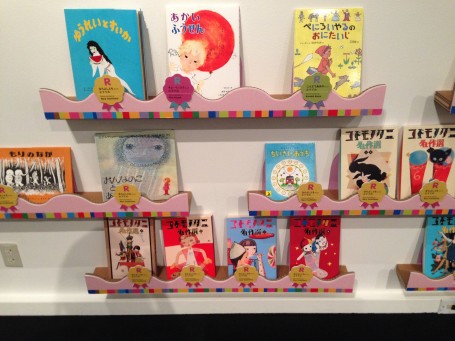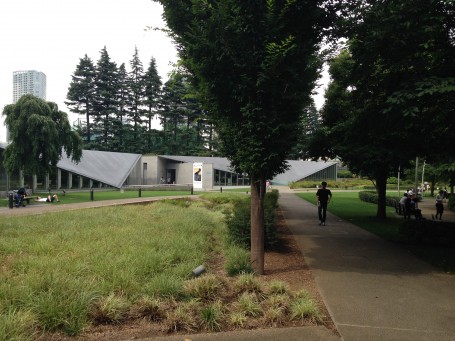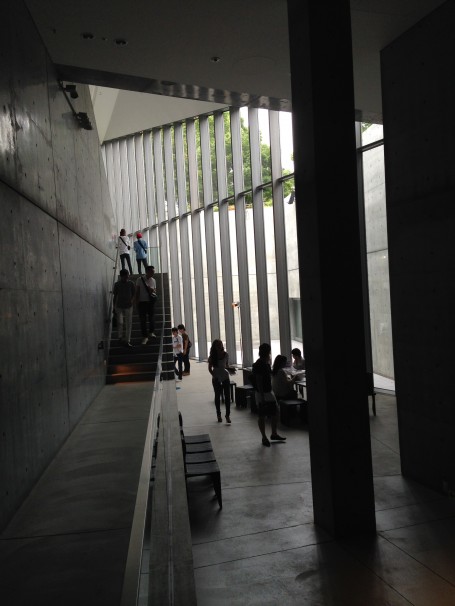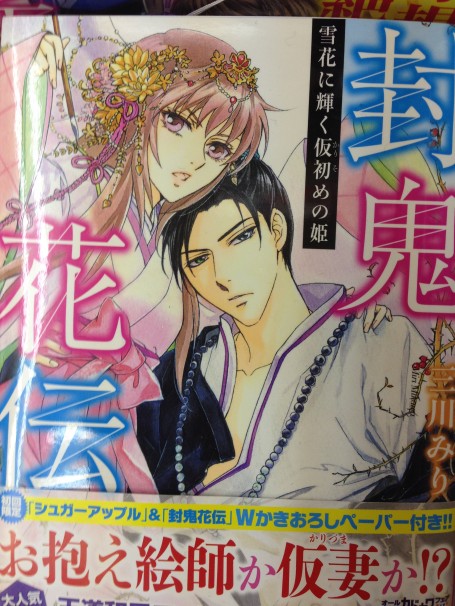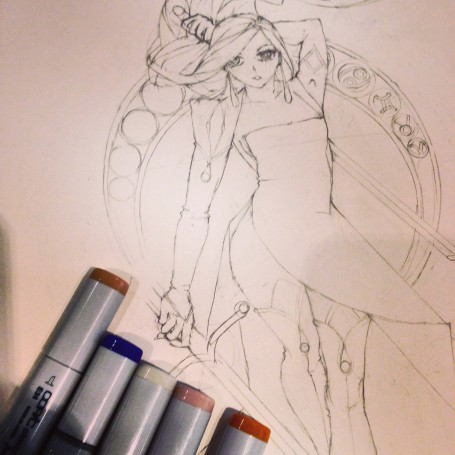By Natasha Cirisano
Roppongi Hills is basically the Rodeo Drive of Tokyo: high-end shops, careful planning, and beautiful architecture. I actually did a project on the Mori Tower (which is located at its center) for one of my Japanese art classes, so I wanted to see it for real. When I stepped out of the subway and saw the entrance ahead of me, I felt like I had already been there! It reminds me strangely of my hometown, Miami, where a lot of the art and fashion scene is concentrated in this same kind of rising upscale “midtown” area. Most of the Mori Tower, the main landmark of Roppongi, consists of offices, but there is an art museum on the 52nd floor complete with a three-sixty viewing deck of the entire skyline of Tokyo. The view is well worth a trip – you can get right up to the glass, which is vertigo-inducing, but also a major Instagram moment (and for half the price of the Tokyo Skytree). Even from the top of the tower, Tokyo seems to stretch on and on in every direction. Everything looks like some sort of miniature of itself, like someone built the entire city out of Legos complete with little toy cars on the highways and carefully stacked buildings. Here is one of the many pictures I took from the viewing platform:
Next, I visited the Mori Art Museum (included in the ticket to the observatory – again, good value), which had an exhibition about the world seen through the eyes of children. One of my favorite Japanese artists, Yoshitomo Nara, was exhibited (no photos allowed!), and I also watched this surrealist-type silent, animated short film which seemed like it had some subversive themes about sexual maturity, but that’s just my interpretation…
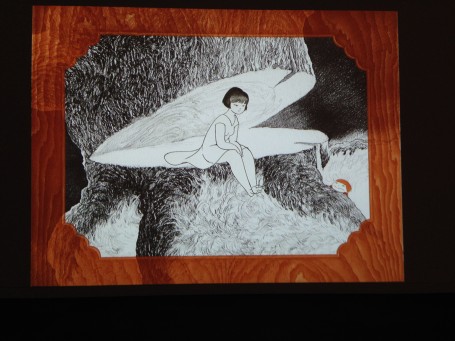
Still from film. I actually really liked this piece. It was subtle enough that you could just watch it as a pretty cartoon, but also obvious enough that the themes of children learning about reproduction and sexuality definitely came through.
At the end, there was a picture book library with books recommended by all of the artists. Surprisingly, many of Nara’s recommendations seemed like they had an Eastern European or Russian aesthetic, which I did not expect from him given that he has stated that much of his inspiration comes from American punk rock. However, seeing as though Nara has illustrated a picture book himself, it did not surprise me that he had so many favorites.
Overall, I really like Japanese art because I don’t see as much of a hierarchy here between fine art, design, and illustration. In America, people who enjoy work in the “anime/manga style” or those that do illustrative, narrative, or figurative works are often denigrated as “less than” fine artists. There is also a real separation between traditional artists who work with materials like oil on canvas and digital artists who “paint” with Photoshop and a tablet. It is very difficult to get digital art into a gallery, and styles associated with digital work (like more fantastical images) are relegated to the world of concept art for video games or movies. On the other hand, I think the idea of what constitutes “fine art” in Japan is more open to these ways of working. For example, I found this gallery in the Mori Tower showcasing contemporary paintings by an artist named Haruna Tagawa. Though oil on canvas, the smooth blending and whimsical style of these pieces looked like what America still considers underground digital or fringe work. Seeing this type of work in such a prestigious arts building gave me hope that the styles I enjoy are accepted at least somewhere by the larger art world!
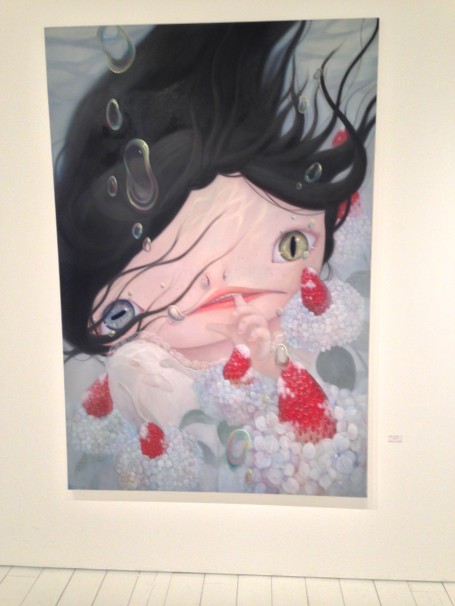
One of my favorite paintings by Haruna Tagawa. I really liked her use of distortion to make the girl appear fish-like, the oddly-shaped pupils, and the way the water is reflected on the forehead. The piece is about five feet tall.
The last place I visited in Roppongi was the Issey Miyake 21_21 DESIGN SIGHT museum in Tokyo Midtown. The museum called the artists exhibited “image makers” instead of artists or fashion designers, because, it explained, they didn’t want to separate visual culture into categories. Like Issey Miyake’s fashion designs, beautiful imagery spans both the functional and decorative, two-dimensional and three-dimensional, high brow and low brow spectrum. The museum itself was a blend of photography, fashion design, and architecture, as the space itself seemed like a modern sculpture.
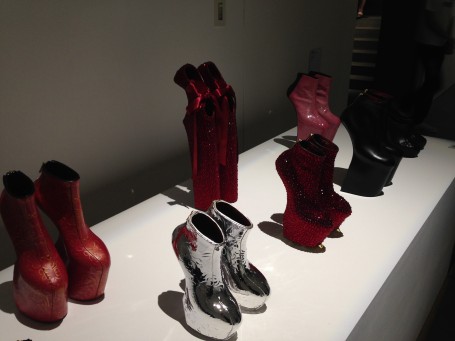
Heel-less shoes by Noritaka Tatehana at 21_21 DESIGN SIGHT. (There is also a place where you can try them on, if your feet are small enough.)
From the carefully curated white walls of the Mori Art Museum to the cluttered bookshops of Jimbocho, art is everywhere in Japan, and I think this contributes to the fluidity between art, design, and illustration. Visual culture is not bounded by the walls of the gallery. Just as much as I enjoyed the “official” museums, I loved going through the manga stores and looking at the pictures on all the covers. Even though I couldn’t read any of the stories, I could look at the covers and wonder what they were about. There is a strong sense of the human narrative connected with the art here, which I don’t see as much in contemporary American gallery art, where conceptual or abstract work is more “trendy.” Here are some of my favorite manga covers:
Inspired by all the art that I have seen here, I went to Bumpodo (an art store by Sakura Hotel) and bought myself a set of Copic markers (used for manga, $3-4 in Japan, but $8 in America!), some illustration board, and a whole lot of gel pens and ink liners. I can’t wait to make some drawings of my own. We’re leaving Japan soon…but here’s a last work in progress shot that I will take with me on my next study abroad to Australia.


